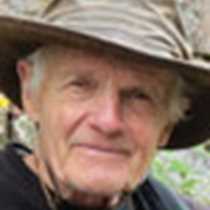Petersburg lies near the end of the narrows. Here we have an opportunity to walk on a boardwalk through a magical mossy forest engulfed in a world of green that is soaking up carbon dioxide from the air and pouring out fresh oxygen. Skunk cabbages, with their huge, almost tropical-looking leaves, scent the air with their slightly pungent odor. We take deep breaths and thank the billions of needles and leaves around us that are doing their amazing work.
Soon we enter another world, one of carnivorous plants, dwarf pines and wide open spaces. In this bog the plants are well adapted to the difficult, water logged, acidic environment. The pink flowered kalmia and Labrador tea have thick, fuzzy leaves for protection. The sundew gathers essential nitrogen from the carcasses of insects it captures. The whole effect is like a Japanese garden complete with bonsai trees and reflecting pools.
Finally we reach tidewater and soak up a timeless scene that could be as it was thousands of years ago: mists creeping out of an ancient forest crossed by a tidal channel, its borders rimmed with the glow of bladder kelp. One crow chased a raven while the rest foraged on the beach flipping over kelp in the search for crabs or clams. Eagles chittered as they stood like sentinels. A young eagle squealed for food.




